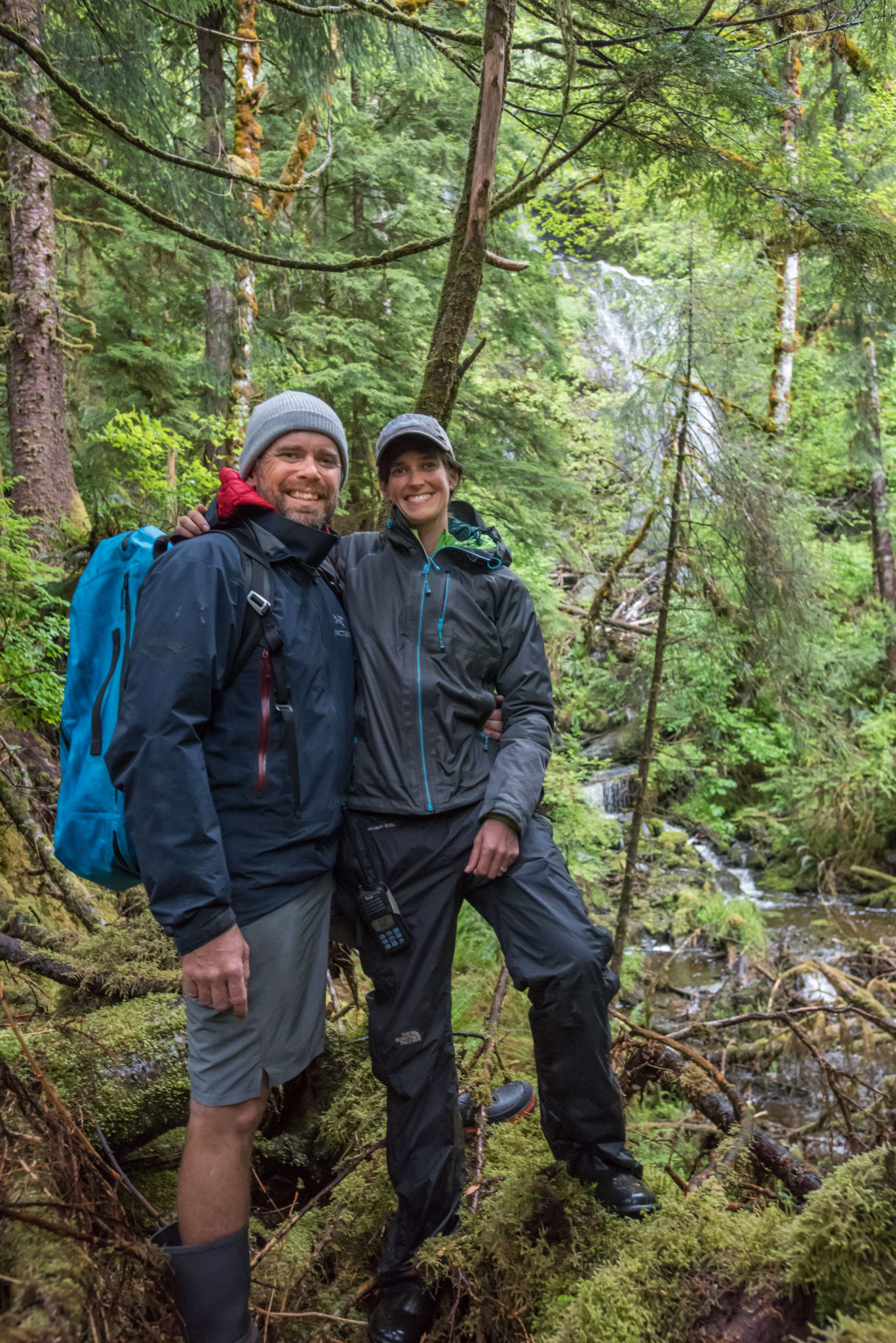Bushwhack
The rain lashed at the windows with fury, but I didn’t mind. We were hunkered down in the very back of the aptly name Crescent Cove, well prepared for the 35-knot storm now seething overhead. The small steep inlet shielded us from the winds that tormented the tree tops above. We took advantage of the forced lay day, making fresh bread, playing games, taking naps and sipping tea in the cozy cabin aboard Hula Girl.
But by the afternoon, a bit of cabin fever had set in, and the pelting rain had let up enough to mount a land exploration expedition. We donned rain pants and muck boots, warm jackets and beanies then piled into the dinghy and headed to shore. With the dinghy tied off to a tree above the high tide line, we set off down the rocky beach towards the head of the inlet. Our charts indicated the presence of a river there that might lead to a lake, which seemed like a fun hike to do. But the family of black bears, calmly grazing in the meadows around the river mouth, had other plans for us.
We stood quietly and admired these beautiful creatures from a safe distance. These black bears (scientifically called Ursus americanus carlottae) are a distinct subspecies of the American black bear found on the mainland. Endemic only to Haida Gwaii, they are larger overall than their mainland cousins and have a huge head and molars for chomping on the hard-shelled sea creatures abundant in the tidal zones. Recently, scientists also found evidence of grizzly bears on the islands, but not in the last few hundred years.

These big lumbering black bears were munching on the succulent vegetation in the meadow and crabs, barnacles and sand fleas found along the rocky shore. This is common food for hungry bears emerging from their winter slumber. They didn’t mind us peeking in on their evening meal; with so little human presence in this area, the bears have plenty to eat and little to fear from us. In fact, the story goes that there has never been a bear attack on Haida Gwaii. Perhaps there are some mainland communities that could learn from such well-behaved bears (and humans, of course).
Respecting the bears’ space, we tucked into the moderately old growth forest that lined the rocky shoreline. Turning away from the head of the inlet and the grazing bears, we followed well used game trails (created by animals that crisscross through the forest), clamoring over old logs and up steep hillsides, pausing along the way to admire a slug, hug a tree, or identify a new plant. All the while, we talked and sang to the bears that call these forests home. “Hey bear”; “how are you today, bear?”; “thanks for letting us explore, bear”. These one-sided conversations ensured the bears knew where we were so we wouldn’t startle any of them into action. Boy would I hate to be the one to break the island’s forever-standing streak of zero bear attacks.
Haida Gwaii hosts eleven native species of mammals and dozens of endemic plants and birds, so in addition to the bear prints and scat we spotted in the forest, we were on the lookout for signs of other local creatures. We didn’t see any Pine Martens or River Otters, but we did see the prints and scat of black tailed deer, an introduced species that is threatening the already fragile forest ecosystem. These deer thrive in the second growth forests left behind after logging an area, where they over-graze, stealing food and shelter from other animals and impeding the regeneration of keystone tree species such as the western red cedar.
The signs of logging were prevalent. We examined the notches chipped into huge crumbling stumps, used by loggers to bring down the huge trees those stumps once supported. At one point we stumbled on an old logging road, lined with young alders. The road had obviously been defunct for some time, and it was reassuring to see the surrounding healthy forest slowly reclaiming its land.
The sound of rushing water drew us through the trees until we skirted the edge of a massive cedar tree, still standing strong. The view suddenly opened to reveal a tall 3-tiered waterfall, raw and beautiful. We sat on the pillow-soft moss-covered ground to admire the view and have a snack. While the signs of logging established we were not the only ones to visit this surreptitious waterfall, it felt magically remote and extraordinary. 
Eventually, we pulled ourselves away and started the bushwhack back down to the dinghy, still following game trails and calling out to the bears. We emerged at the base of the waterfall’s river, where the tannin-infused fresh water mingled with the clear cold salt water of the bay. The bears were still munching in the meadow. We climbed into the dinghy and put-putted out to the anchorage, laughing at the antics of two curious harbor seals following us around. I finally noticed it was still raining; our enchanting hiking adventure had displaced any thoughts of stormy weather and the tall tree canopy effectively shielded us from the wind and rain. What a perfect way to spend a stormy afternoon in Haida Gwaii.







